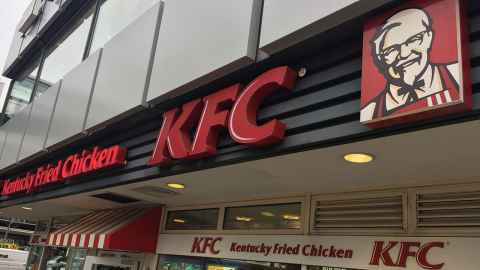Time to clear the food swamp
11 June 2020
Fast food operator KFC has backed down in the face of vocal opposition in Otara. Boyd Swinburn applauds a rare victory for the community.

Otara is already a food swamp, filled with junk food outlets and no supermarkets. KFC thought they would add to the swamp by building a new outlet in Baird’s Rd even though their Papatoetoe outlet is only three minutes down the road.
The residents were outraged – they did not want another obesogenic food outlet in their community which already has massive obesity and diabetes problems. Local Councillor, Efeso Collins, jumped in with very vocal support for his community. In the end, KFC quickly backed down, probably because of reputational risk, handing local democracy a rare victory.
It could have been a very different outcome and it usually is for these regular community versus fast food outlet battles. As the news of the KFC back down was breaking, I was giving a Zoom lecture to post-graduate health students.
I was confidently predicting to the students that KFC would just barge on regardless, knowing that the community and the council have virtually no legal grounds to block them nor would they have the money or appetite to fight them in court. I was very happy to learn, as soon as I finished the lecture, that my predictions were completely wrong.
Our research at the University of Auckland has found that in richer suburbs, there are 3.7 takeaway outlets per 10,000 people, whereas in poorer suburbs it is 13.7 per 10,000. This four-fold difference is no accident.
The companies know that people who are already struggling on low incomes make easy targets to sell more takeaways to. Besides, the residents in the rich neighbourhoods are naturally more protected – land in their area is more expensive, the protests would be louder, and the patronage would be lower. So poorer neighbourhoods cop more of the foods that will make their already substantial physical and mental health problems even worse.
Why are junk food outlets legally allowed to set up shop right next to schools or in communities heavily burdened with the very diseases the junk food is creating when there is heavy community opposition? Why are council zoning regulations so toothless that they can’t support the community’s health?
In theory, councils can make by-laws ‘to protect, promote and maintain public health and safety’ but, in reality, there is very little on their by-law books to allow them to block a commercial activity if it is in an appropriate commercial zone.
A hazardous chemical factory would be blocked from setting up shop next to a school on health and safety grounds, but a junk food outlet would not be blocked. The regulatory ground is too flimsy and the big chain outlets are multinational corporations with deep pockets so the legal avenues to protect communities from being junk food swamps are very weak.
Disadvantaged communities are trying to lift the liveability of their neighbourhoods, and the Thriving Otara collective is a good example of this
There are also fundamentally different philosophies underpinning this tension between commercial priorities and community priorities.
The previous National-led Government was so against councils building liveable communities that they amended the Local Government Act to remove the four well-beings (social, economic, environmental and cultural) from the purposes of local government.
The Labour-led Government has since inserted them back into the Act but with this ongoing philosophical tug-of-war in Wellington, it is easy to understand why the protection and promotion of community well-being has not become embedded in council by-laws.
Our research group has just completed a review with over 50 independent and government experts of the current Government’s progress on implementing food policies for healthier food environments. The bottom line is that there has been no progress in the last three years and one of the recommendations from the expert panel was that the Government enacts legislation to allow and encourage councils to create healthy community food environments.
Internationally, several countries are establishing Healthy School Food Zones which means that the food inside the school is healthy and the zone of 250-500 metres around the school has junk foods minimised, for example, through no new fast food outlets and no advertising for unhealthy foods and beverages.
This should be a no-brainer for a Government and communities interested in improving child health and wellbeing. Disadvantaged communities are trying to lift the liveability of their neighbourhoods, and the Thriving Otara collective is a good example of this.
They know that for people who are struggling, a neighbourhood full of junk food outlets, liquor stores and gambling opportunities is dragging them down even further. If the people want to improve their living environments, the Government and councils need to support their efforts by updating their toothless zoning regulations. That would bring us closer to local democracy.
Professor Boyd Swinburn is the Professor of Population Nutrition and Global Health at the School of Population Health and chair of the Health Coalition Aotearoa.
This article reflects the opinion of the author and not necessarily the views of the University of Auckland. It was first published by the New Zealand Herald , KFC versus Otara battle a win for the community
Media queries
Gilbert Wong Research Communications Manager
021 917942 gilbert.wong@auckland.ac.nz